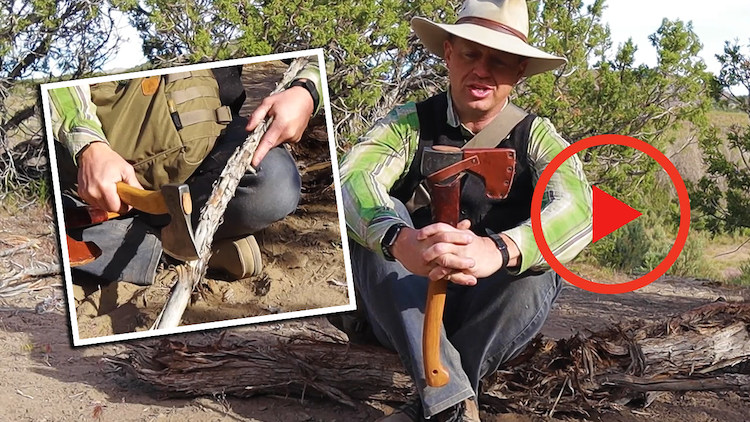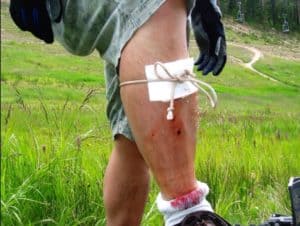I was organizing my gun safes, and realized that I had somehow accumulated five single-action .22 rimfire revolvers. I thought that a short article about them, how accurate or not they are, and whether or not various brands of ammunition make an accuracy difference might be of interest to SurvivalBlog readers. To preview the conclusion, yes, if…
 I’ll start with the latest acquisition first. I was at a gun show earlier this year, not intending to purchase anything, and ran across one of the latest offerings from Heritage Arms. Heritage has been making the Rough Rider .22 single-action revolver in the USA since 1992. For many years, they had one offering, A small frame copy (or replica) looking like the classic Colt Peacemaker, with a 6.5-inch barrel. I have owned one of these for around 25 years. More on that one later. Today, the offerings from Heritage have expanded quite a bit. They offer revolvers from one-inch to 16 inch barrels, birds head and standard plow handle grip frames. Fixed or adjustable sights, quite a few grip and finish options, and many other variations. They even have a really interesting Carbine version. I had told myself that I didn’t need another “cheap” Heritage revolver, even if they were pretty sharp looking. Then I found a threaded barrel, tactical model complete with Picatinny rail, and just had to find out if a suppressor would really work on a revolver. Spoiler Alert: Not really.
I’ll start with the latest acquisition first. I was at a gun show earlier this year, not intending to purchase anything, and ran across one of the latest offerings from Heritage Arms. Heritage has been making the Rough Rider .22 single-action revolver in the USA since 1992. For many years, they had one offering, A small frame copy (or replica) looking like the classic Colt Peacemaker, with a 6.5-inch barrel. I have owned one of these for around 25 years. More on that one later. Today, the offerings from Heritage have expanded quite a bit. They offer revolvers from one-inch to 16 inch barrels, birds head and standard plow handle grip frames. Fixed or adjustable sights, quite a few grip and finish options, and many other variations. They even have a really interesting Carbine version. I had told myself that I didn’t need another “cheap” Heritage revolver, even if they were pretty sharp looking. Then I found a threaded barrel, tactical model complete with Picatinny rail, and just had to find out if a suppressor would really work on a revolver. Spoiler Alert: Not really.
A great thing about Heritage is that they don’t sell what we used to call in the software industry “vaporware”. Quite a few manufacturers promote guns through ads or articles in gun magazines that are not really available yet. I have never seen that from Heritage, in fact, I had not seen an ad for the tactical model until after I saw this one on the gun show table.
 Anyway, back to the gun. It has a 6.5-inch barrel, accessory rail and threaded muzzle. Plain black finish with carbon fiber grips. One unique feature of the Heritage revolvers is that they have a manual safety. I think it is a bit on the ugly side, but since there is no transfer bar on it, the safety is needed if you want to carry the revolver with 6 rounds. You can also use it to win a Facebook debate with self important experts who will tell you that revolvers don’t have safeties. The trigger pull is great. I can’t find my trigger pull scale (hence the need to clean out the gun safes), but I would guess it is well under 5 pounds and very crisp with no over travel. I had a Bushnell TRS 25 red dot sight that I had picked up years before at Walmart on clearance still in the box (another benefit of cleaning out the gun safes) and mounted it on the revolver.
Anyway, back to the gun. It has a 6.5-inch barrel, accessory rail and threaded muzzle. Plain black finish with carbon fiber grips. One unique feature of the Heritage revolvers is that they have a manual safety. I think it is a bit on the ugly side, but since there is no transfer bar on it, the safety is needed if you want to carry the revolver with 6 rounds. You can also use it to win a Facebook debate with self important experts who will tell you that revolvers don’t have safeties. The trigger pull is great. I can’t find my trigger pull scale (hence the need to clean out the gun safes), but I would guess it is well under 5 pounds and very crisp with no over travel. I had a Bushnell TRS 25 red dot sight that I had picked up years before at Walmart on clearance still in the box (another benefit of cleaning out the gun safes) and mounted it on the revolver.
My first step was to try it with a…














